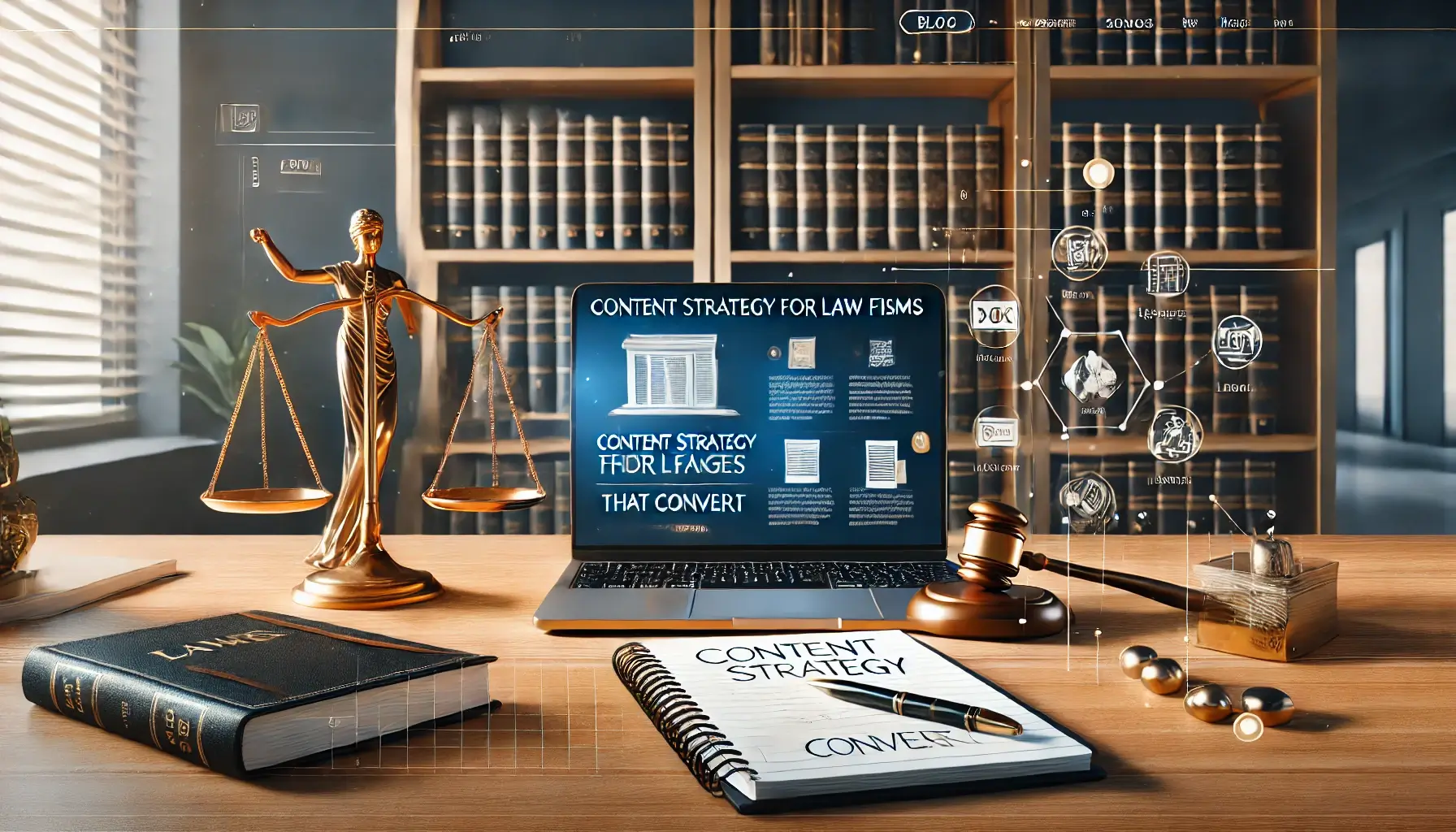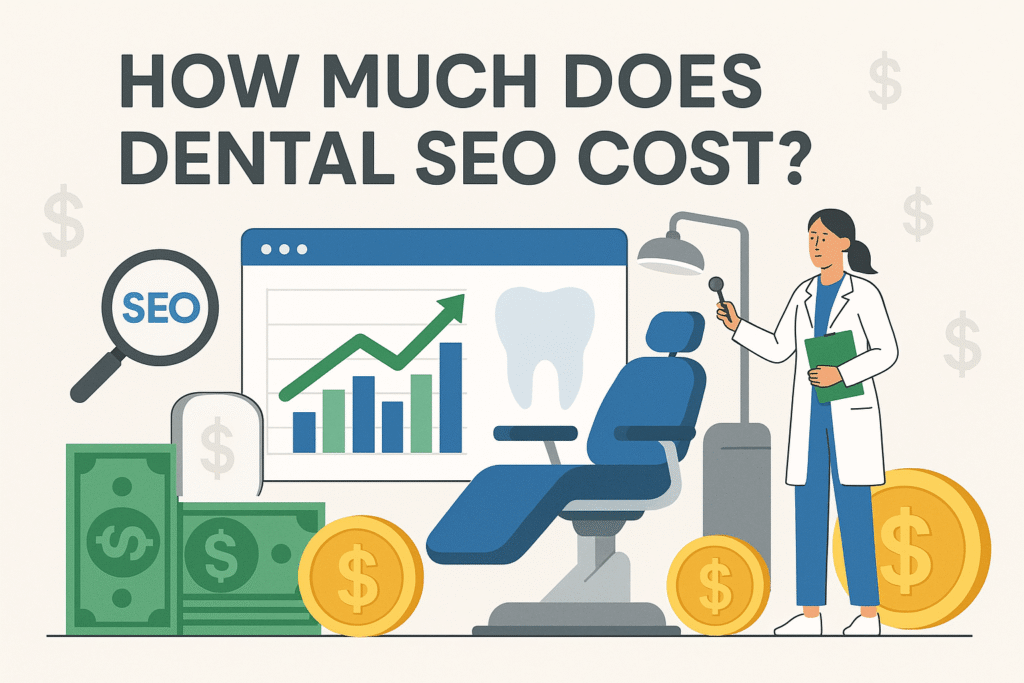Why Legal Pages Are Crucial for Law Firm SEO?
In today’s hyper-competitive UK legal industry, having a website isn’t enough — your law firm needs legal pages that work. Pages that not only attract qualified traffic through search engines but also convert visitors into clients.
Legal content sits at the heart of your online presence. Whether it’s a well-written service page or a clearly defined complaints procedure, every page plays a unique role in establishing trust, demonstrating expertise, and guiding users toward action. This is especially true in the legal sector, where authority, accuracy, and clarity aren’t optional — they’re expected.
Yet, many solicitor websites in the UK, including those in Manchester, fail to leverage their content assets effectively. They either lack important pages or overuse template-style copy that doesn’t align with the way users search for legal help today.
In this guide, we’ll explore how to create a content strategy for law firms that goes beyond keywords. You’ll learn how to build legal pages that align with both search intent and conversion goals — a balance that’s essential if you want to rank well and win clients.
If you’re a solicitor based in Manchester, make sure to review our Complete SEO Guide for Solicitors and see how your content stacks up against proven local SEO practices.
The Core Legal Pages Every UK Law Firm Website Needs
Every successful solicitor website in the UK shares one thing in common: foundational legal pages that provide clarity, establish authority, and support SEO. These aren’t just about legal compliance — they’re also conversion assets, helping potential clients understand what you offer and why they should trust you.
Here are the essential legal pages your law firm must have:
1. Homepage
Your homepage acts as your digital receptionist. It should:
- Clearly state your practice areas.
- Highlight location relevance (e.g. “Solicitors in Manchester”).
- Showcase trust signals like accreditations, testimonials, or case results.
- Include strong CTAs like “Get a Free Consultation”.
📌 Related Reading: How Solicitors in Manchester Can Rank Higher on Google Maps
2. Service Pages (Practice Areas)
Each legal service should have its own dedicated page, such as:
- Family Law
- Conveyancing
- Personal Injury
- Employment Law
- Immigration Law
This improves topical coverage and allows for deeper semantic internal linking later. Each page should include:
- Specific client problems
- Outcome-focused messaging
- Relevant legal procedures
📌 Want deeper insight? See our Complete SEO Guide for Solicitors for structuring these effectively.
3. About Us / Meet the Solicitors
A compelling “About” page builds E-E-A-T (Experience, Expertise, Authoritativeness, Trust). Include:
- Team biographies with credentials
- Awards and accreditations
- Personal touch to establish trust
4. Testimonials / Case Studies
Social proof drives action. Use this page to:
- Feature detailed success stories
- Include client quotes
- Add star ratings, if applicable
- Optionally include video testimonials for engagement
5. Contact Page
Make it dead simple to get in touch. Include:
- A clear contact form
- Click-to-call phone numbers
- Office location with embedded map
- Opening hours and response expectations
📌 Bonus Tip: Make sure this page is optimised for local intent and links well from your legal service pages.
Each of these pages forms the macro-contextual foundation of your legal website — essential for building semantic relevance and passing link equity to supplementary pages.
Supplementary Legal Pages That Drive Trust and Conversions
While core pages help you rank and explain your services, supplementary legal pages give your law firm credibility. These pages often go unnoticed — yet they play a vital role in building user trust, satisfying regulatory expectations, and enhancing your site’s semantic completeness.
Let’s explore the legal pages that strengthen your website’s trust signals and conversion pathways:
1. FAQs Page
A well-structured FAQ page answers:
- Common questions about your services
- Legal timelines, fees, and client rights
- Process steps like “What happens after I submit a claim?”
✅ Semantic SEO Tip: Each question can act as a query representation, increasing passage ranking potential.
2. Terms & Conditions
Not just legal boilerplate. It:
- Outlines service limitations and legal disclaimers
- Reinforces professionalism
- Signals Google that your site is legally robust (part of YMYL compliance)
3. Privacy Policy
A non-negotiable under GDPR:
- Clearly states data handling practices
- Builds confidence, especially for users submitting forms
- Should be easily accessible site-wide (footer, contact pages, etc.)
4. Complaints Procedure
Especially important for UK law firms:
- Shows transparency and professionalism
- Required by regulatory bodies like the SRA
- Can be a ranking differentiator when users search for “[law firm] complaints process”
5. Client Charter / Code of Conduct
Helps potential clients understand:
- How your firm handles cases
- What they can expect in terms of communication, fees, and timelines
- Your values and commitments
6. Disclaimer & Cookie Policy
- The disclaimer covers legal liability
- Cookie policy ensures GDPR and ePrivacy Directive compliance
- Both help establish site credibility and trustworthiness
7. Accessibility Statement
Often overlooked, this page:
- Shows your commitment to inclusivity
- Helps users with disabilities understand how they can navigate your website
- Signals that your firm is compliant and empathetic
These supplementary pages form the micro-context of your site — supporting your topical authority and signalling completeness in the eyes of both users and search engines.
📌 Internal Link Reminder: If you’re unsure how to implement these or need guidance, see Why Your Business Dropped in Google Rankings — often, missing or poor-quality supplementary content is part of the problem.
Expanding Your Legal Website: Beyond the Basics
Once your core pages are in place, the next step is building out supporting content that reinforces your authority — both in the eyes of potential clients and search engines. This is where entity-attribute SEO comes in. It’s about covering not just what you do, but how, why, and with what qualifications — all through strategically crafted content.
For example:
- A transparent pricing page helps visitors understand what to expect before they reach out, reducing friction and aligning with Google’s preference for clear, trustworthy content.
- Highlighting your SRA authorisation and Law Society memberships isn’t just good practice — it supports E-E-A-T principles, essential for ranking in competitive legal niches.
- A regularly updated legal blog gives your firm topical momentum. Sharing insights on new laws or notable rulings shows you’re active, informed, and relevant — particularly if your content is aligned with your local SEO strategy.
- Finally, don’t underestimate the power of team bios. Prospective clients feel more at ease when they know who they’re working with. A well-written profile page can also support internal linking to relevant service areas.
Each of these pages may seem small in isolation, but collectively, they help form a semantic network that positions your firm as an authority — not just another listing.
Turning Traffic Into Clients: Optimising Legal Pages for Conversion
Having the right pages is one thing — getting them to convert is another.
The best-performing legal websites don’t just inform. They persuade. They make it easy for visitors to say, “This is the solicitor I want.”
So how do you do that?
It starts with understanding user behaviour. When someone lands on your family law page, for instance, they’re not just looking for information — they’re often dealing with stress, urgency, or confusion. Your content and layout need to meet them there.
Here are a few patterns used by high-converting legal websites:
- Call-to-action clarity: Avoid generic CTAs like “Submit”. Use action-oriented, empathetic prompts like “Get Family Law Advice Today” or “Schedule a Free Consultation”.
- Sticky navigation or header CTAs: Especially on mobile, a persistent contact button boosts enquiries significantly.
- Geo-contextual reinforcement: Phrases like “Trusted Divorce Solicitors in Manchester” remind users they’ve found someone local — and relevant.
Want to see this in action? Many of the strategies above are already being used effectively on our Manchester Law Firm SEO page. Subtle design changes combined with precise messaging can lead to meaningful lift in engagement.
Other elements that matter:
- Trust triggers (reviews, SRA badge, years in practice)
- Fast-loading forms that don’t ask for unnecessary info
- Live chat or chatbots (even if basic) to handle quick enquiries after hours
Conversion is where content meets layout. You could have the most comprehensive legal service page on the internet, but if the CTA is buried, or it looks like a wall of text, people will leave.
Make it obvious. Make it actionable. Make it feel human.
Bridging the Gap: How Local SEO Enhances Your Legal Pages
You’ve got your practice areas, your trust pages, and a few great CTAs. But if you’re targeting clients in a specific city — say, Manchester — and you’re not weaving local context into your legal pages, you’re leaving rankings (and revenue) on the table.
Here’s the catch: most legal websites isolate local SEO into one or two “Location” pages and treat everything else as generic. That’s a mistake.
Search engines — and users — reward pages that feel localised within the content, not just by metadata or footers.
So how do you create contextual bridges between your legal services and your location?
- Embed local language and scenarios naturally
- Instead of saying “We help with landlord disputes”, say “We’ve helped tenants across Manchester resolve complex landlord disputes — including cases involving Ancoats-based properties and absentee landlords.”
- Instead of saying “We help with landlord disputes”, say “We’ve helped tenants across Manchester resolve complex landlord disputes — including cases involving Ancoats-based properties and absentee landlords.”
- Include local testimonials or legal case references
- Real stories from local clients add trust and keyword-rich context — organically.
- Real stories from local clients add trust and keyword-rich context — organically.
- Use location modifiers in headings sparingly but strategically
- Don’t keyword stuff, but don’t be afraid to write something like “Conveyancing Solicitors for Greater Manchester Homebuyers” if it fits naturally.
- Don’t keyword stuff, but don’t be afraid to write something like “Conveyancing Solicitors for Greater Manchester Homebuyers” if it fits naturally.
- Cross-link local content strategically
- For example, your blog on How Solicitors in Manchester Can Rank Higher on Google Maps could be linked from service pages like property law or business legal advice, reinforcing topical bridges and geo-relevance.
By creating these subtle yet powerful connections between what you do and where you do it, you turn every legal page into a local landing page — without breaking the natural flow or tone.
And that’s exactly what search engines look for when trying to decide which firm deserves to appear in the local pack or organic listings for terms like “employment solicitor near me” or “Manchester family law advice.”
Why Your Legal Pages Might Be Underperforming?
If you’ve built out all the “right” pages — the service breakdowns, the compliance content, even a blog or two — but you’re still struggling to generate leads or rank meaningfully, the problem likely isn’t what you’ve written.
It’s how you’ve structured it.
Here are some of the most common — and costly — mistakes law firms make with their content:
❌ 1. Boilerplate content across practice areas
If your family law and employment law pages sound eerily similar, Google sees it too. Repetition dilutes topical relevance and damages your site’s semantic uniqueness.
Fix: Each service page must explore its own macro and micro context — specific laws, client scenarios, terminology, and procedural insights. Copy-pasting intros or paragraphs across pages is a fast track to underperformance.
❌ 2. Weak heading structure
Your headings should be built around the query intent and reflect the user’s mental journey. If every page uses H2s like “Why Choose Us” or “Our Services” with no variation or context, search engines (and users) won’t understand the depth of your offering.
Fix: Use headings that convey context and attributes — e.g. “What to Expect During a Redundancy Consultation” or “Fixed-Fee Divorce Services in Manchester”. These are more descriptive, and they help with passage indexing.
❌ 3. No internal linking strategy
Legal websites often forget to interlink their own pages beyond the nav bar. That’s a huge missed opportunity to:
- Signal relationships between topics
- Pass PageRank
- Encourage deeper engagement
Fix: Contextually link from service pages to blog content (e.g. your guide to local SEO for solicitors), FAQs, and supplementary content like complaints procedures or client charters. Do it naturally, where curiosity is highest.
❌ 4. Ignoring supplementary content
Many law firms skip the “boring” stuff — privacy policies, accessibility statements, complaint processes. But these aren’t optional anymore. They boost trust, satisfy compliance standards, and improve your YMYL profile.
❌ 5. Thin pages with low semantic coverage
If your “Conveyancing” page is 300 words long, it’s not ranking — not today, not in 2025. You’re competing with firms offering rich explanations, FAQs, location-specific info, and actionable CTAs.
Fix: Build contextual depth. Think: “What would a first-time buyer want to know — and search — before contacting us?” Answer those questions, and Google will see value.
Improving your legal content isn’t about stuffing it with more keywords or adding fluff. It’s about understanding context, structure, and user psychology — and then shaping each page accordingly.
Maintaining Semantic Integrity and Topical Relevance Over Time
SEO isn’t static. Neither is legal content.
What worked a year ago — or even six months ago — might now be misaligned with how users search and how Google interprets those searches. That’s why your legal pages need more than just keywords and compliance. They need semantic integrity — and a framework to maintain it.
So what does that mean in practice?
1. Optimise the order, not just the words
Search engines evaluate not just what you say, but how it flows. If your headings, paragraphs, and content blocks don’t follow a logical, user-first contextual flow, your pages may struggle to rank — even if the content is accurate.
For example, don’t start a page on “Settlement Agreements” with a paragraph about your law firm. Start with what users want to know first, like “What is a settlement agreement in UK employment law?”
2. Match your content to query context, not just query terms
Let’s say you’re targeting the phrase “redundancy advice solicitor”. There are multiple intent pathways behind that:
- “What are my rights during redundancy?”
- “How much can I claim?”
- “Can I challenge my dismissal?”
- “Where can I find legal advice in Manchester?”
If your page only addresses one angle, you’re missing out on coverage.
✅ Instead: Reflect multiple representative queries within a single page, with headings and content blocks built to answer each one — cleanly and clearly.
3. Keep content configuration agile
What happens when legislation changes? Or when search intent shifts (e.g. more mobile, more “near me” searches)? If your legal content is locked into a rigid format, it won’t adapt.
Your structure should allow for:
- Easy updates to headings, CTAs, or schemas
- Expansion through new supplementary sections (e.g. FAQs, recent cases)
- Integration with newer blog content or internal resources
4. Use internal links to reinforce context, not dilute it
You don’t need to link every other sentence — but you do need to guide users and search engines through your topic network.
For instance, from your employment law service page, you could link to:
- Your redundancy guide
- A blog post about recent changes in employment tribunals
- Your FAQs on settlement agreements
This creates a semantic bridge — strengthening the macro and micro connections within your site’s topical map.
Maintaining topical relevance isn’t just about publishing more content — it’s about ensuring each page evolves alongside search behaviour, legal developments, and semantic expectations.
Final Word: Future-Proofing Your Law Firm’s Website
The legal industry is evolving fast — and so is the way people search for legal help.
Having “just a website” is no longer enough. You need a semantically structured content system that not only ranks, but builds trust, answers real questions, and guides users to action.
That means:
- Pages that go beyond surface-level SEO
- Internal structures that reflect real-world legal intent
- A strategy that keeps evolving as the search landscape shifts
Whether you’re launching a new legal site or looking to restructure your existing one, the content strategy you build today will directly impact your visibility, credibility, and lead generation tomorrow.
If you need help building legal pages that don’t just rank — but convert — our team at MCR SEO Pro specialises in Law Firm SEO for solicitors across Manchester and the UK.
👉 Explore our Law Firm SEO services to see how we can help you build lasting authority and drive qualified leads.
Thanks for reading. If you’re serious about turning your legal content into a competitive advantage, now’s the time to make your next move — strategically.





